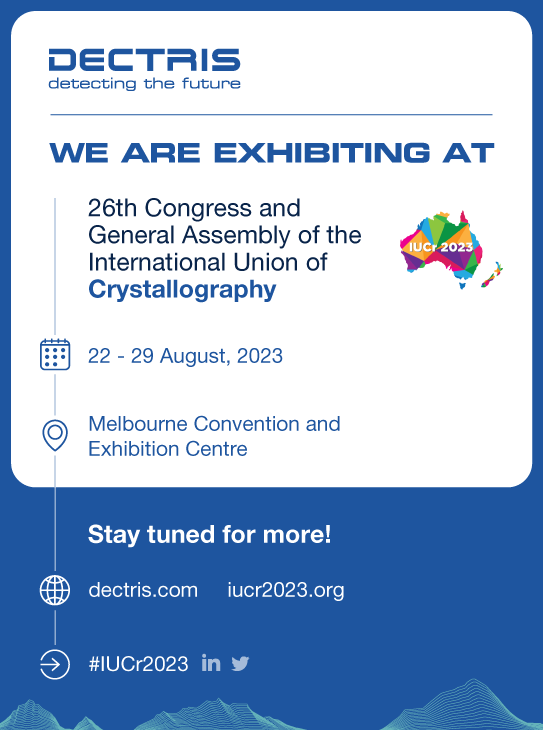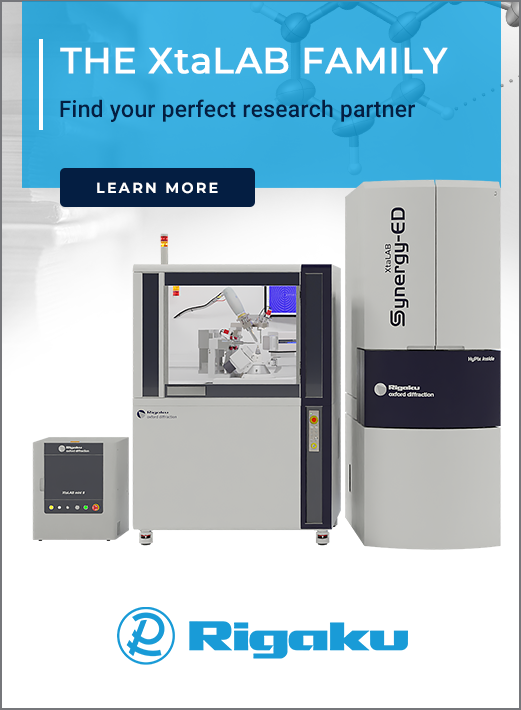


IUCr journals news
Foreword to the special virtual issue on Actinide physics and chemistry with synchrotron radiation
![me6188thumbnail [me6188thumbnail]](https://www.iucr.org/__data/assets/image/0018/155124/me6188thumbnail.jpg)
Actinide research is currently experiencing a renaissance in the fields of material science, nanotechnology, medicine and environmental science. It is now possible to study the chemistry and physics of the actinide elements (all radioactive) using state-of-the-art non-destructive techniques at synchrotrons which have not been available before. The beamlines and instruments dedicated to actinide research have made various spectroscopic and scattering methods accessible to scientists worldwide. The new synchrotron sources at the large-scale facilities offer more advanced possibilities for the development of new methodologies in actinide science in the future. Theoretical studies of actinides are followed by unique experimental methods and novel experimental data.
The virtual special issue on Actinide Physics and Chemistry with Synchrotron Radiation (https://journals.iucr.org/special_issues/2022/actphyschem/index.html) includes several invited contributions that focus on novel results obtained for actinide materials with the help of synchrotron radiation. In total, 19 articles cover a broad variety of synchrotron-based spectroscopic and scattering methods used to study actinide-containing materials and can be tentatively divided into five groups:
(1) Gerry Lander and Roberto Caciuffo reviewed the X-ray diffraction (XRD), resonant X-ray scattering (RXS), X-ray magnetic circular dichroism (XMCD), resonant and non-resonant inelastic scattering (RIXS, NIXS), and dispersive inelastic scattering (IXS) experiments in studies of actinide materials (Caciuffo & Lander, 2021). Advanced synchrotron-based spectroscopic methods, such as X-ray absorption near-edge structure (XANES), recorded in the high energy resolution fluorescence detection (HERFD) mode at the U L3- and M4-edges were used by Sergei Butorin and co-workers in the chemical state investigation of uranium carbides supported by single Anderson impurity model (SIAM) theory (Butorin et al., 2022). Rene Bes and co-authors reported HERFD-XANES data at the U L1-edge of KUO3 analysed by electronic structure calculations (Bes et al., 2022). Tim Pruessmann and co-workers applied the HERFD/RIXS methodology at lanthanide and actinide L3-edges in combination with low-Z element K-edge XANES along with electronic structure calculations to probe the chemical and physical properties of f-electron systems (Pruessmann et al., 2022).
(2) Alexander Scott Ditter and co-authors showed the power of soft X-ray spectromicroscopy at the O K-, U N4,5- and Ce M4,5-edges for spent nuclear fuel investigations, yielding chemical information on the sub-micrometre scale (Ditter et al., 2022). Yusheng Zhang and co-workers investigated the covalency effects in the bonding between the uranyl ion and dithiophosphinate by combining sulfur K-edge XANES and density functional theory (Zhang et al., 2022).
(3) Lin Wang and co-authors combined X-ray diffraction and extended X-ray absorption fine-structure (EXAFS) methods to study thorium(IV) adsorption onto multi-layered titanium carbides, Ti3C2Tx (Wang et al., 2021). Jian Sun and co-authors studied two series of uranium-doped Nd2Zr2O7 pyrochlore materials as potential nuclear waste host matrices by the combination of the X-ray diffraction, Raman and EXAFS techniques (Sun et al., 2022). Using EXAFS at the U L3-edge and XRD, Antonia S. Yorkshire and co-authors investigated U(VI)–cement mineral interactions, relevant to understanding the waste disposal of actinide-containing materials (Yorkshire et al., 2022). Hao Ding and co-workers examined synthetic Chernobyl lava specimens using micro-focus spectroscopy at the U L3-edge along with diffraction techniques and were able to construct U oxidation state maps (Ding et al., 2021). Anna Krot and co-workers performed U(VI) speciation in contaminated environments using EXAFS data recorded at the U L3-edge on U reference compounds (Krot et al., 2022). Cyril Zurita and co-workers utilized Pu L3 EXAFS to study the interaction of Th(IV), Pu(IV) and Fe(III) with ferritin protein (Zurita et al., 2022).
(4) Thomas Dumas and co-authors studied the size and structure of the hexanuclear plutonium oxo-hydroxo clusters in an aqueous solution by combining small-angle X-ray scattering (SAXS) and Pu L3-edge EXAFS methods (Dumas et al., 2022). Anna Romanchuk and co-workers proposed a new core-shell approach for the actinide and lanthanide dioxide nanoparticles with calculated effective coordination numbers from Ce K-edge and Th and Pu L3-edge EXAFS (Romanchuk et al., 2022). Baihui Zhai and co-authors studied the formation and structure of polynuclear thorium(IV) colloids and thorium dioxide nanoparticles by SAXS (Zhai et al., 2022).
(5) Korey P. Carter and co-authors reported on the in situ beam reduction of Pu(IV) and Bk(IV) during Pu/Bk L3 XANES/EXAFS measurements, which yielded Pu(III) and Bk(III) coordination complexes with hydroxypyridinone chelators (Carter et al., 2022). Richard Husar and co-workers performed in situ Np L3-edge XANES/EXAFS measurements and density functional theory calculations in combination with an electrochemical setup, dedicated to radioactive samples (Husar et al., 2022). Damien Prieur and co-workers conducted in situ U L3-edge XANES measurements and thermodynamic calculations to establish the U–O phase diagram (Prieur et al., 2021). Bianca Schacherl and co-authors implemented the cryogenic sample environment for the tender X-ray range, necessary for actinide HERFD M4,5-edges data collection on radioactive samples (Schacherl et al., 2022).
There is no doubt that synchrotron radiation plays a critical role in understanding the physics and chemistry of actinide-containing materials. We very much look forward to continued developments in experimental and theoretical synchrotron-based methodologies for fundamental and applied actinide science in the future.
References
Bes, R., Leinders, G. & Kvashnina, K. (2022). J. Synchrotron Rad. 29, 21–29.Caciuffo, R. & Lander, G. H. (2021). J. Synchrotron Rad. 28, 1692–1708.
Zhai, B., Tian, Q., Li, N., Yan, M. & Henderson, M. J. (2022). J. Synchrotron Rad. 29, 281–287.
This article was originally published in J. Synchrotron Rad. (2022). 29, 1131–1132.
This is an open-access article distributed under the terms of the Creative Commons Attribution (CC-BY) Licence, which permits unrestricted use, distribution, and reproduction in any medium, provided the original authors and source are cited.








